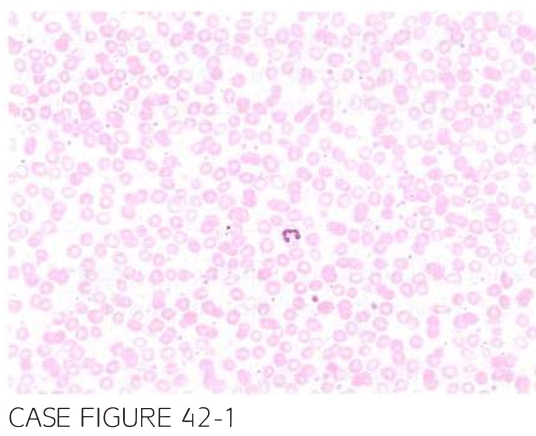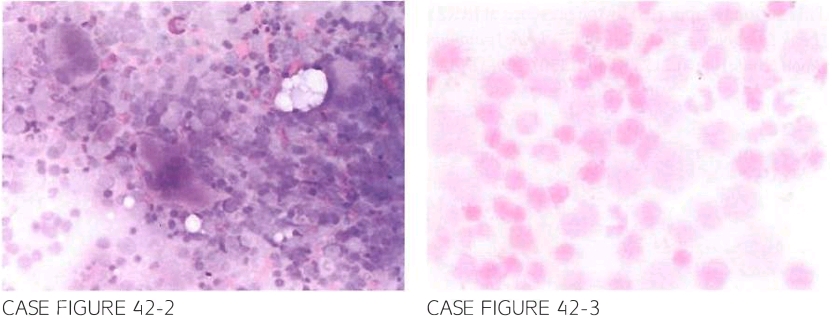A 58-year-old male presents for further evaluation of anemia. Physical examination reveals no lymphadenopathy or hepatosplenomegaly. Laboratory workup shows hemo globin 7. 7 g/dL. mean corpuscular volume 1 OLJ FL. leukocyte count 7.800/ .uL. and platelet count 760.000/,LLL. Ferritin level is elevated. Peripheral blood smear is shown below.

Bone marrow aspirate and Prussian blue iron stain of bone marrow aspirate are shown below.

Evaluation revealed absence of BCR-ABL translocation. Cytogenetics revealed no abnormalities. JAK2 mutation was present. What is the most likely diagnosis?
- Refractory anemia with ring sideroblasts (RARS)
- Refractory anemia with ring sideroblasts and thrombocytosis (RARS-T)
- Essential thrombocytosis
- 5q-syndrome
- 3q syndrome






 Medicine
Medicine
B. Refractory anemia with ring sideroblasts and thrombocytosis (RARS-T) is considered to represent an overlap syndrome between myelodysplastic (RARS) and myeloproliferative syndromes. This notion is supported by the presence ofJAK2 mutation in 67% of cases meeting criteria for RARS-T (Leuk Lymphoma. 2003; 44(3):557, Leuk Lymphoma. 1999;34(5-6):615, Br J Haematol. 2009;144(6):809, Blood. 2006;108(7):2173, Blood. 2007;109(3):1334). .
need an explanation for this answer? contact us directly to get an explanation for this answer